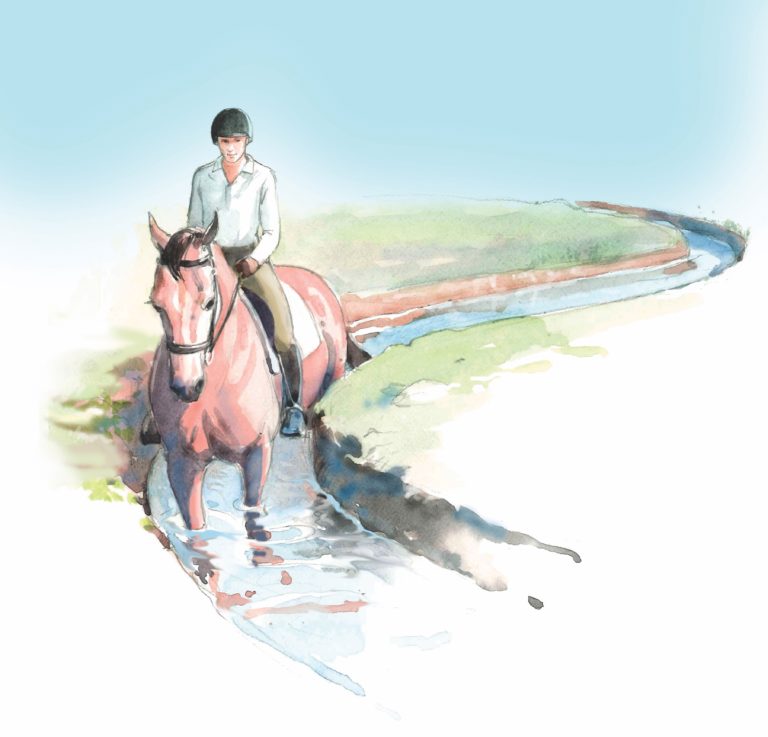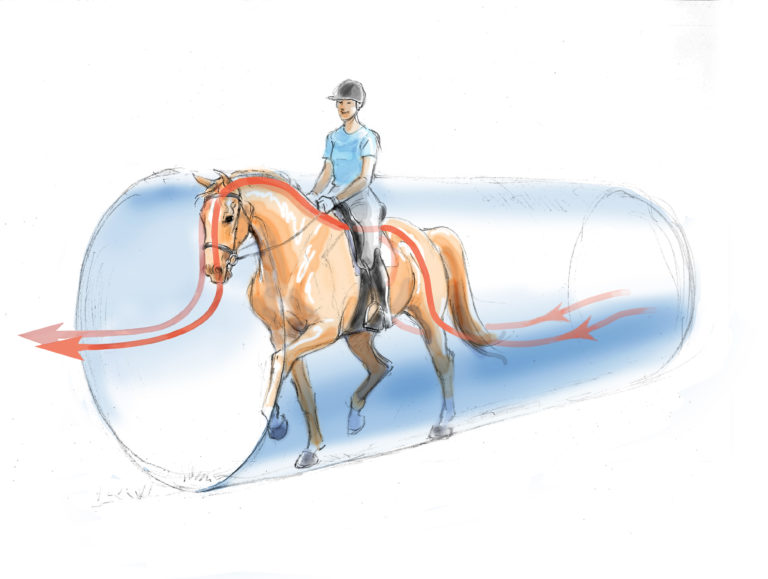I had my first dressage lesson in 1970. I wish I knew when I first began that all of the bits of information I was learning were only tiny pieces of the whole puzzle. Every time I would try a new aid on a horse that would get a certain response, it felt like a whole new world opened up, and this was the magic piece to make everything work right.
Now, 40 years later, I realize that there are so many magic pieces, and that the more important thing is to know when to use an aid, when to stop using an aid, when is too little, when is too strong, when is too slow, when is too quick, when is the wrong time and when is the right time. You can use a very good aid with the wrong technique or wrong timing and it won’t produce the result you want.
For example, if a horse is curling behind the bit and a rider cannot get him to step up to the bit from behind, sometimes she will try to hold his head up, which won’t work. Instead, a sharper, quicker half halt with a lightning-fast release and a quick drive forward in the moment of the yield will work.
You can use a great technique at the wrong time and it still won’t work the way you want. For example, the same type of half halt that can get a horse not to curl behind the bit could be 100 percent wrong for a horse who needs to learn to accept a steadier contact. So the rider needs to give smoother, more elastic and more following types of half halts, not a sharp, quick one. The trick is to find the right technique at the right time with the right degree of loudness or softness for the right reason. Then the technique will work if the horse understands the aid.
The types of aids and the combinations of aids and the timing of aids are endless. Sometimes you need to give a louder half halt on one side of your body with more of a following, connected, elastic contact on the other side of your body if the horse is not even enough in the reins. Or the problem may be crookedness in the hind end, where one hind leg is cheating by falling in too much and the outer hind leg is not going forward enough. In this case, one leg should be doing a move-over kind of kick and the other one a drive-forward type of kick. These aids have to get a good reaction from the horse, otherwise they are useless.
Using your weight properly will also determine how the horse responds to your leg. If you are moving the horse’s haunches to the right from your left leg, your weight should be stretched up over your right seat bone so that your weight is going with the horse in the direction he is moving. There are different philosophies about how to use your weight on the horse, but I have found this to work the best for me. Then you add to this that your upper body stretches up slightly forward as you drive him more forward on his outer side.
Discovering and practicing how you use different parts of your body in combination with or separate from other parts of your body will have a profound effect on how your horse responds to you. Here are just a few: a lighter seat, a heavier seat, a half halt anchored in your seat bones, a half halt anchored more in your thighs, a half halt with your upper body without much leg and sometimes you need more leg to push a half halt more through.
The thing that makes dressage so fascinating is that there is no magic formula that you can apply without constantly thinking, feeling and responding to the living and breathing being that is carrying you around.
All of these wonderful animals are so different mentally and physically. This is what I think makes it one of the most difficult of all sports. My old mentor and teacher, Maj. Dezsio Szilagyi, always said, “They go as we ride them.”
It absolutely amazes me that after all these years of riding, training and competing, hardly a day goes by where I don’t learn something new about my 19-year-old Grand Prix horse, BeSe. It feels that despite our ages, we are both getting better.

Cathy Morelli is a U.S. Equestrian Team member who represented the United States in the 1990 World Championships on R.H. MacKinney, who was almost 20 years old at the time. A U.S. Dressage Federation gold medalist, she currently rides BeSe, who has qualified for and competed at the annual national championships at the Intermediaire and Grand Prix levels many times (cathymorelli.com).











